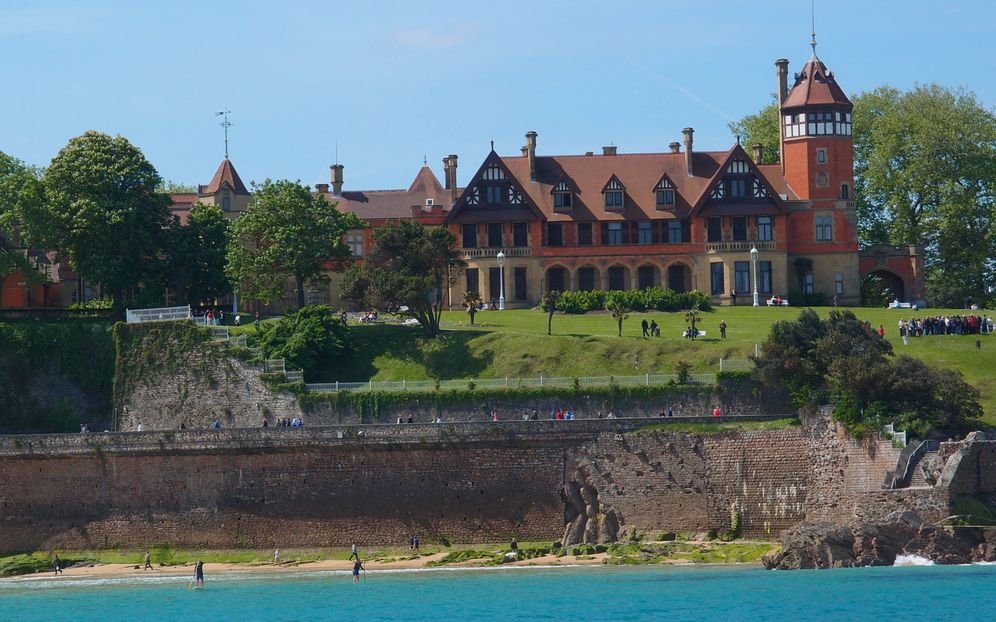I don’t often take a sun holiday these days, but I had a fabulous time last week at The Surf Experience in Lagos, Portugal. I’m not an accomplished surfer by any measure, but there is nothing quite like the thrill of catching a few waves in the sea with the sun overhead – a nice change from the indoors world of academia.
Not for the first time, I signed up for a residential course with The Surf Experience in Lagos. Founded by veteran German surfer Dago Lipke, guests of The Surf Experience stay at the surf lodge Vila Catarina, a lovely villa in the hills above Lagos, complete with beautiful gardens and swimming pool. Sumptuous meals are provided by Dagos’s wife Connie, a wonderful cook. Instead of wandering around town trying to find a different restaurant every evening, guests enjoy an excellent meal in a quiet setting in good company, followed by a game of pool or chess. And it really is good company. Guests at TSE tend mainly to hail from Germany and Switzerland, with a sprinkling from France and Sweden, so it’s truly international – quite a contrast to your average package tour (or indeed our college staff room). Not a mention of Brexit, and an excellent opportunity to improve my German. (Is that what you tell yourself?- Ed)

Hanging out at the pool before breakfast

Fine dining at The Surf Experience

A game of cards and a conversation instead of a noisy bar
Of course, no holiday is perfect and in this case I managed to pick up an injury on the first day. Riding the tiniest wave all the way back to the beach, I got unexpectedly thrown off, hitting my head off the bottom at speed. (This is the most elementary error you can make in surfing and it risks serious injury, from concussion to spinal fracture). Luckily, I walked away with nothing more than severe bruising to the neck and chest (as later established by X-ray at the local medical clinic, also an interesting experience). So no life-altering injuries, but like a jockey with a broken rib, I was too sore to get back on the horse for few days. Instead, I tried Stand Up Paddling for the first time, which I thoroughly enjoyed. It’s more exciting than it looks, must get my own board for calm days at home.

Stand Up Paddling in Lagos with Kiteschool Portugal
Things got even better towards the end of the week as I began to heal. Indeed, the entire surf lodge had a superb day’s surfing yesterday on beautiful small green waves at a beach right next to town (in Ireland, we very rarely see clean conditions like this, the surf is mainly driven by wind). It was fantastic to catch wave after wave throughout the afternoon, even if clambering back on the board after each wasn’t much fun for yours truly.
This morning, I caught a Ryanair flight back to Dublin from Faro, should be back in the office by late afternoon. Oddly enough, I feel enormously refreshed – perhaps it’s the feeling of gradually healing. Hopefully the sensation of being continuously kicked in the ribs will disappear soon and I’ll be back on the waves in June. In the meantime, this week marks a study period for our students before their exams, so it’s an ideal time to prepare my slides for the Eddington conference in Paris later this month.
Update
I caught a slight cold on the way back, so today I’m wandering around college like a lunatic going cough, ‘ouch’ , sneeze, ‘ouch’. Maybe it’s karma for flying Ryanair – whatever about indulging in one or two flights a year, it’s a terrible thing to use an airline whose CEO continues to openly deny the findings of climate scientists.

![IMG_2009[1]](https://coraifeartaigh.files.wordpress.com/2018/10/img_20091.jpg?w=598&h=598)

![IMG_2014[1]](https://coraifeartaigh.files.wordpress.com/2018/10/img_20141.jpg?w=573&h=763)
![IMG_2022[1]](https://coraifeartaigh.files.wordpress.com/2018/10/img_20221.jpg?w=543&h=407)




























